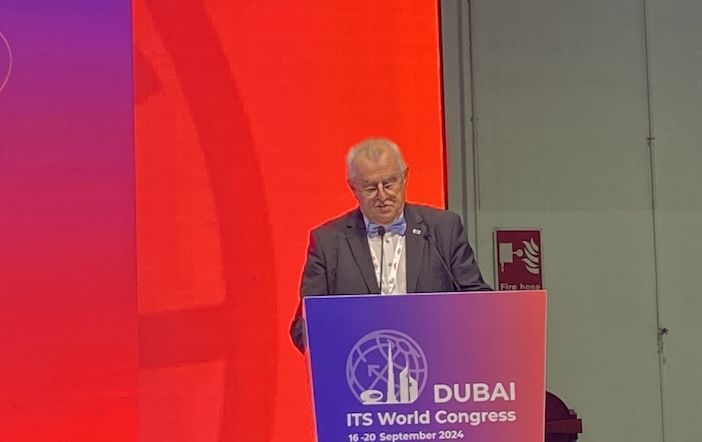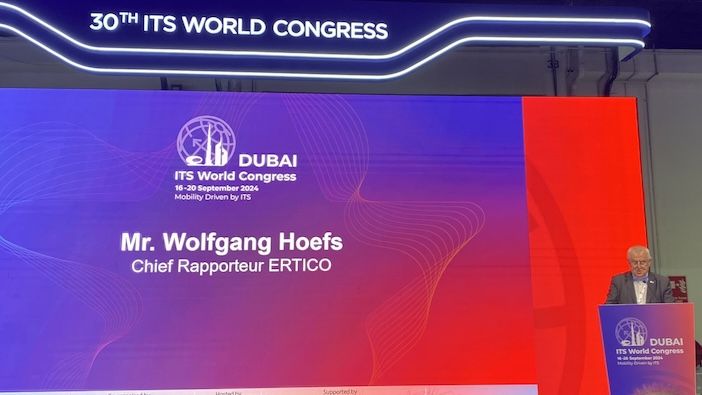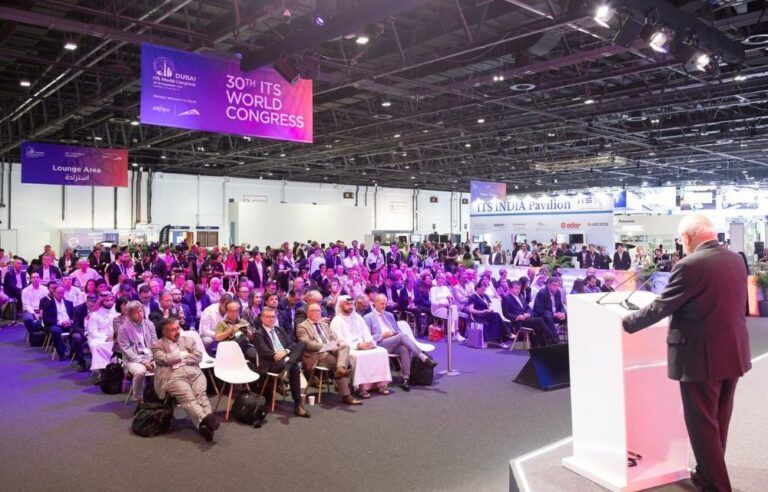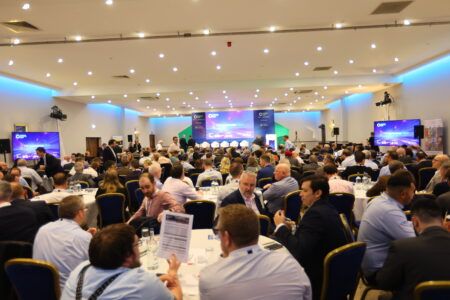At the closing ceremony of the ITS World Congress in Dubai last week (September 20) chief rapporteur Wolfgang Hoefs summarised the conference sessions by highlighting key insights he gleaned from across the week of sessions, assisted by his team of reporters. Between them they attended more than 200 hours of plenaries, forums, and sessions showcasing the latest innovations and discussions shaping the future of mobility.
Hoefs summarised the event in an address read to a packed auditorium on the closing afternoon. His comments in full are reproduced here:
“Distinguished guests, welcome to this summary of the Dubai World Congress. I have just a few minutes to sum up more than 200 hours of plenary sessions, forums and other presentations. So let me share just some key observations and results from this fantastic week in Dubai.
“As you know, this year’s conference theme was Mobility Driven by Intelligent Transportation Systems, and that was built on four pillars. What benefits will higher levels of motivation bring to us? How can we meet mobility demands in a clean away? What are the specific challenges the need to be addressed in urban environments? And lastly, what innovations mobility and logistics are on the horizon?

Automated mobility
“Let me start with a chapter on automated mobility. Once again, automated mobility was a major focus around with around 30 sessions and 50 papers dedicated to it, the importance of regulatory frameworks and international cooperation was emphasized. One of the key message was, share globally to benefit locally, highlighting the global nature of system development, but also taking into account regional differences in use cases.
“Notably, 40% of the papers on automated mobility came from the Asia Pacific region, shared and on-demand services like automated ride pooling and public transport corridor services, both in cities but also in rural areas, were discussed and remote management was seen as a crucial part of these services.
“The safety of automated driving remains a central issue with societal acceptance identified as key requirements for deployment. The pace of introducing automated vehicles has been slower than expected, and no clear business model has emerged to accelerate requirements and unlock promised economic and social benefits, yet. But new ideas introduced included compliance with traffic laws, and the use of generative AI in driving systems and maritime Intelligent Transport Systems.
Sustainable transportation
“Clean mobility featured 15 sessions, including a comprehensive session titled Energizing the Future Innovations in Clean Mobility and Intelligent Systems. Clean mobility is a critical element of sustainable development driven by the need to reduce greenhouse gas emissions, improve air quality and combat climate change.
“The discussion demonstrates that key mobility is advancing, driven by the increasing adoption of electric vehicles, technological progress, policy initiatives and growing awareness of the need for sustainable transport solutions. However, challenges remain such as such cybersecurity risks, consumer behavior, infrastructure issues and the publicity of regulation.
“Urban mobility overtook automated mobility in terms of number of presentations this time, with 29 sessions and 86 papers. Digital twins received more attention this year than previous conferences. The discussions focused on several areas, including the use of artificial intelligence for traffic management and image information, the progress of the vehicle-to-everything communication technologies, and ongoing conversations around equity, diversity, accessibility and inclusion in mobility services.

The use of AI in transportation
“Popular topics included AI applications for pedestrian detection, adaptive traffic control and decision support for integrated management. Data sharing and exchange was seen as critical to maximize the potential of ITS tools.
“Innovation in mobility and logistics was focused on in 49 sessions demonstrating that the mobility sector is driven by the demand for future proof solutions for passenger and goods transport.
“Mobility is moving towards highly automated, data driven, digitally integrated systems. The importance of data sharing, artificial intelligence and addressing blind spots in location based data were seen.
“There were promising developments in AI applications such as detecting vulnerable road users and fairly major support systems. Communication technologies including 6G are being looked to, to improve services in rural and high-density urban areas.
A successful event
“I would like to extend my sincere thanks to the internet, to my international co-rapporteur team for their hard work collecting the information presented here, and also to my predecessor, Professor Eric Sampson, for sharing his knowledge and experience with us in the preparation phase this year.
“The Congress was once again, the international focal point for discussing how to meet today’s and tomorrow’s mobility needs in a more efficient, sustainable and safe way.
“Experts from across the globe met with policymakers, demonstrated research results and solutions and changed knowledge and ideas. Let’s continue to work cooperatively across all regions, as we have done this week, regardless of the economic and political challenges we are facing at present.
“See you next year in August, in Atlanta, Georgia, at the ITS World Congress 2025 where I look forward to hearing about the achievements which we will make in the coming 12 months.”




